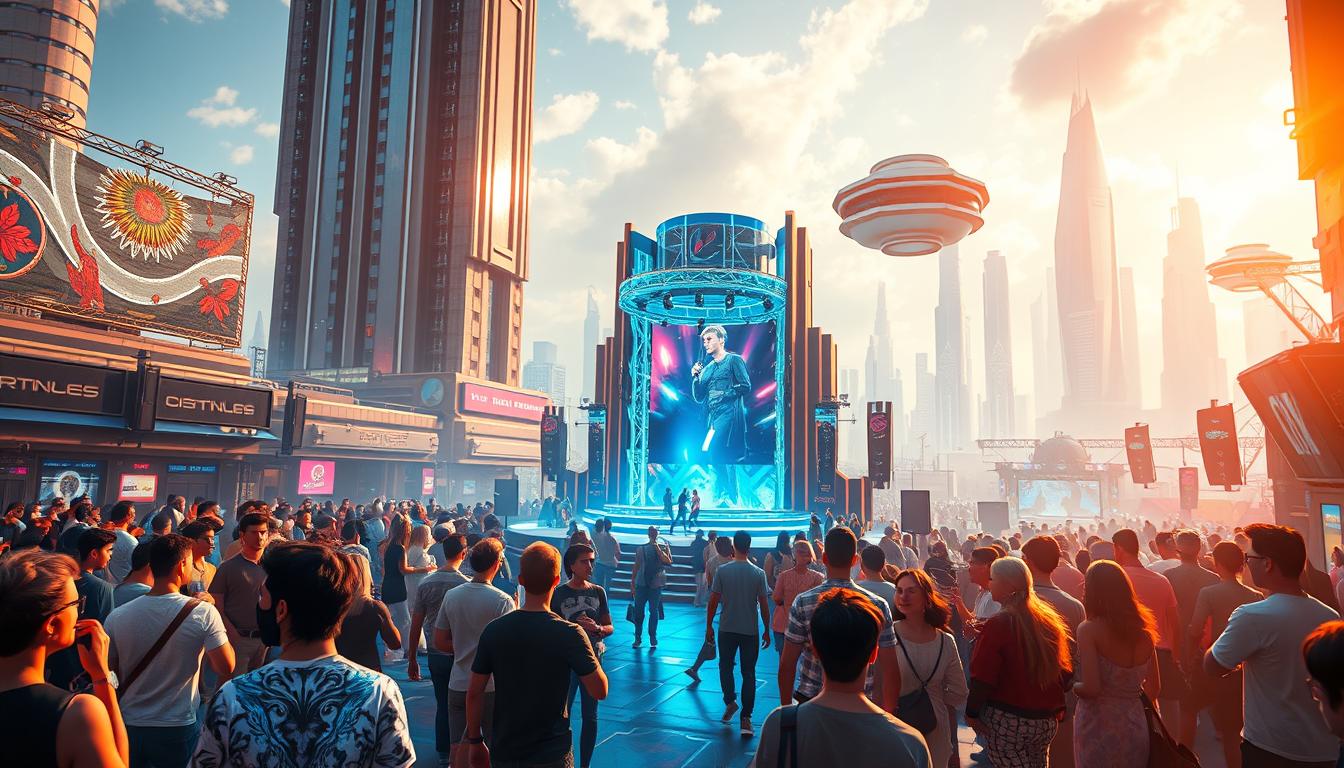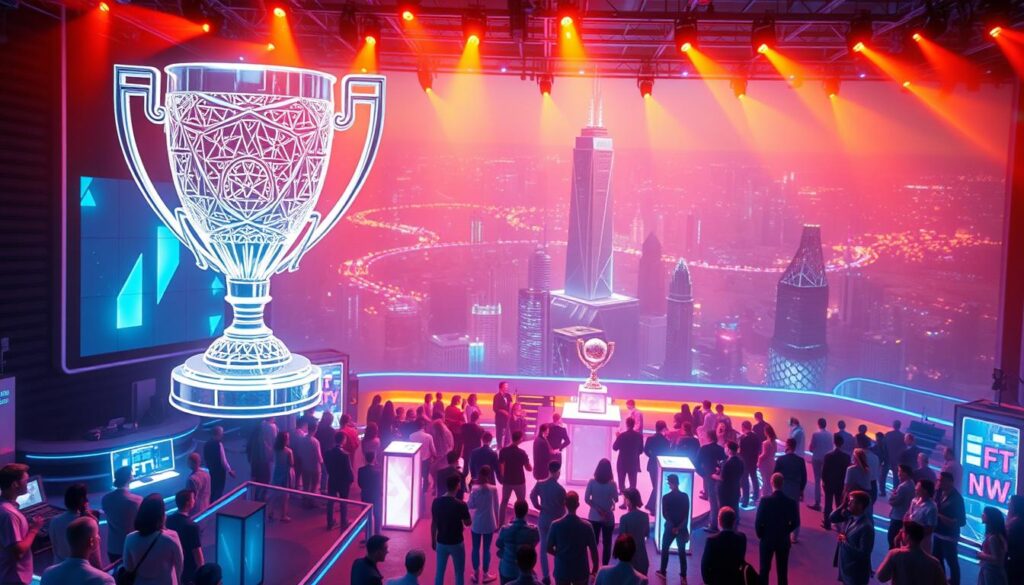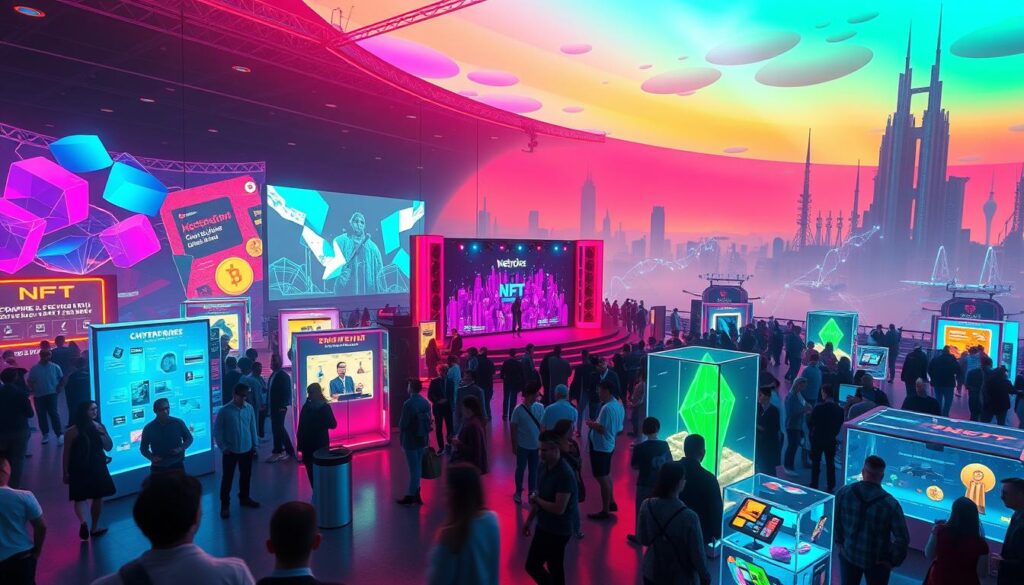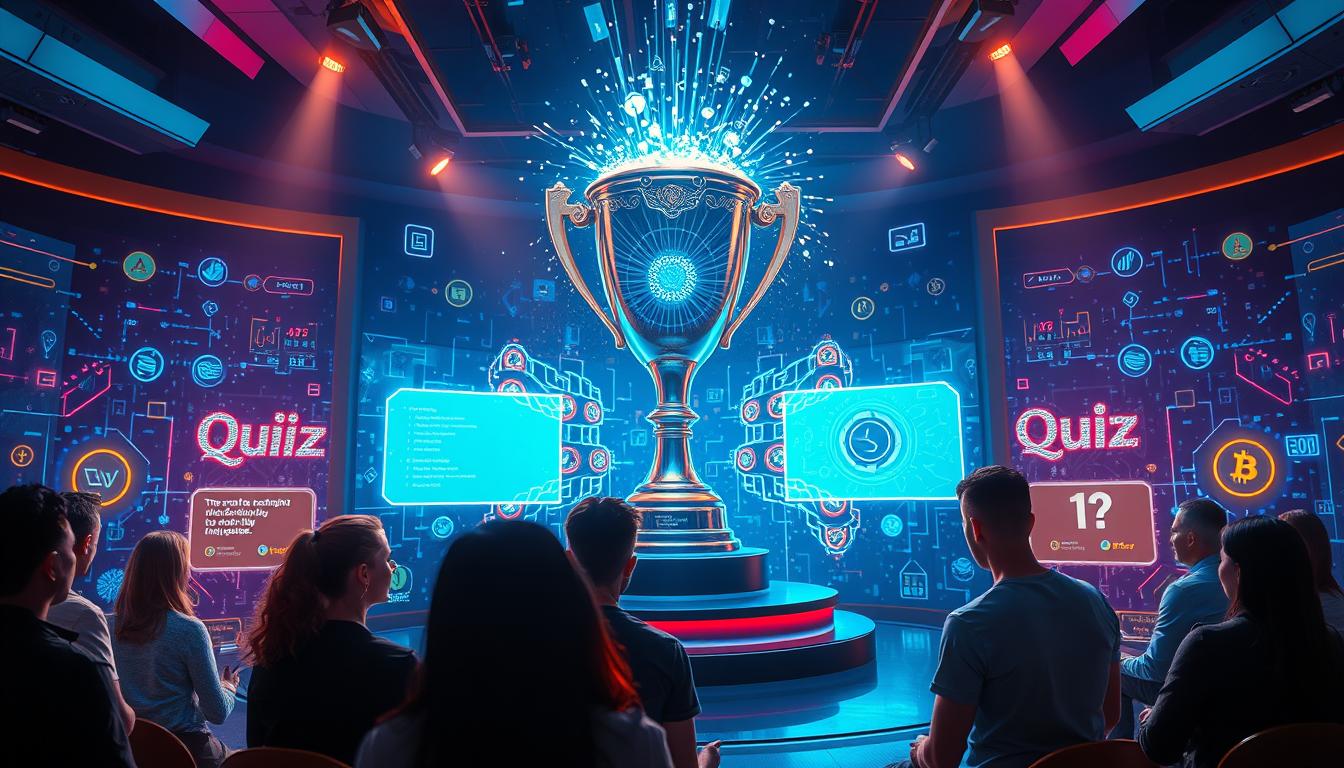Now Reading: Discover How to Earn NFT Collectibles Through Metaverse Events
- 01
Discover How to Earn NFT Collectibles Through Metaverse Events
Discover How to Earn NFT Collectibles Through Metaverse Events

A new frontier is opening up where virtual gatherings and digital ownership meet. This exciting space combines immersive online worlds with unique digital items. People can now gain special tokens simply by joining these activities.
These interactive online spaces create unprecedented opportunities for attendees. The blend of blockchain technology and engaging virtual environments offers fresh value. This benefits organizers, sponsors, and participants in a shared experience.
This movement changes the idea of event souvenirs. Instead of physical items, people receive valuable digital assets. These assets can have practical uses and potential value in the broader market.
Our guide will walk you through the essential ideas and hands-on methods. We will look at the technology that makes this possible and show real examples. This emerging digital economy welcomes everyone, from experts to those just starting.
We promise actionable insights from actual implementations. Get ready to explore how these experiences are reshaping community interaction and digital possession.
Key Takeaways
- Virtual gatherings are merging with digital ownership to create new participant rewards.
- Blockchain technology and immersive online worlds provide fresh value for all involved.
- Digital souvenirs from these activities can have real utility and market value.
- This guide offers foundational knowledge and practical steps for participation.
- The opportunities are designed to be accessible to a wide range of users.
- Real-world applications demonstrate the growing impact on community engagement.
Introduction to NFT Collectibles and the Metaverse
At the core of modern digital interaction lie verifiable proof of ownership and expansive virtual spaces. Non-fungible tokens (NFTs) are the building blocks for this new paradigm.
These unique digital assets represent ownership of both virtual and real-world items. The technology behind them ensures each token is one-of-a-kind and secure.
Defining NFT Collectibles and Digital Ownership
NFTs go far beyond just digital art. They can represent many things:
- Virtual land and gaming items
- Exclusive access passes and membership tokens
- Event tickets and other valuable digital assets
This technology creates a system of true digital possession. Holders have public, verifiable proof that an asset is theirs.
The Role of the Metaverse in Shaping Experiences
The metaverse is a collective virtual space. It uses augmented and virtual reality to create immersive worlds.
People use these spaces to socialize, work, and play. NFTs act as the key to these experiences. They grant identity, community access, and special privileges.
This combination is powerful. The virtual world provides a place to use digital items. The tokens provide a way to own and trade them. For more foundational knowledge about metaverse NFTs, explore our detailed guide.
This shift changes how we think about value and community online. It allows people to build a digital presence with real, ownable assets.
How to Earn NFT Collectibles Through Metaverse Events
Getting started with digital event participation is simpler than many anticipate. The process begins before the main activities even commence, focusing on preparation.

Participants first download a dedicated mobile application provided by the organizers. This app includes a built-in digital wallet for managing unique digital assets.
Step-by-Step Guide for Event Participants
Registration within the app creates a unique wallet address. Organizers use this address to send your initial admission pass.
At the event, verification kiosks confirm your identity. Once verified, your digital admission badge is sent directly to your wallet, replacing physical passes.
Sharing specific data can unlock richer experiences. Granting access to your location or social profiles can activate special games and surprises.
Key Considerations for Integration
Your admission token becomes a personalized key. It layers data about your identity, possessions, and location to create a unique profile.
This customization powers various features. It can grant entry to exclusive sessions, trigger digital swag drops, and enable location-based activities.
The table below outlines how different participant types experience these benefits:
| Participant Type | Base Access | Enhanced Opportunities |
|---|---|---|
| General Attendee | Event Admission | Scavenger hunts, sponsor activities |
| Speaker / Creator | VIP Sessions, Green Room | Signing tokens, reminting collectibles |
| Verified Influencer | All Access Areas | Brand collaborations, exclusive drops |
Always protect your wallet information like cash. Be mindful of transaction fees and only grant necessary data permissions to maximize your experience safely.
Leveraging Blockchain Technology for Secure Event Access
The integration of blockchain infrastructure transforms how we manage event participation and access control. This technology replaces traditional ticketing with cryptographic verification systems.

Digital security now relies on three key authentication factors. These include identity confirmation, ownership verification, and location validation.
Understanding Smart Contracts and Digital Security
Smart contracts automate permission management through self-executing code. They eliminate manual ticket checking and create seamless entry experiences.
These programmable agreements enable passive admission systems. Attendees simply approach gates with their mobile devices containing authorized tokens.
Doors automatically recognize valid credentials through proximity detection. The system provides instant feedback with green access grants or red denials.
Blockchain’s transparency ensures trustworthy record-keeping. All access logs and distributions remain permanently verifiable while protecting individual privacy.
This technology development prevents counterfeit tickets and unauthorized entry. It also enables sophisticated capacity management and dynamic pricing scenarios.
Integrating Metaverse Technologies for Engaging Event Experiences
The fusion of augmented and virtual reality tools is transforming digital gatherings into captivating multi-sensory journeys. These technologies create environments where participants feel truly present and connected.
Augmented and Virtual Reality Applications
Virtual reality applications transport users into fully immersive three-dimensional spaces. Participants can interact with environments and other attendees as if physically together.
Augmented reality overlays digital elements onto real-world settings. This creates hybrid experiences where users discover interactive content by exploring physical locations.

Interactive Tools and Real-Time Engagement
Modern platforms feature spatial audio for natural conversations and gesture controls for intuitive interaction. Avatar customization allows personal expression during digital gatherings.
Gamification elements like achievement systems and quest mechanics motivate participation. These features create multiple pathways for obtaining digital assets throughout the experience.
| Technology Type | Primary Function | User Experience Impact | Example Applications |
|---|---|---|---|
| Virtual Reality | Full immersion | Presence and interaction | Virtual concerts, educational simulations |
| Augmented Reality | Digital overlay | Hybrid exploration | Location-based games, interactive tours |
| Spatial Audio | Directional sound | Natural communication | Virtual meetings, social spaces |
| Gesture Controls | Intuitive interaction | Enhanced engagement | Gaming environments, training simulations |
Entertainment platforms like Sensorium’s PRISM demonstrate the potential for large-scale virtual gatherings. Educational applications leverage these technologies for contextual teaching environments. Proper investment tracking helps participants manage their digital portfolio effectively.
Real-Life Applications and Examples of NFT-Driven Event Innovations
The Vidcon 2023 conceptual framework illustrates the powerful integration of digital assets in event management. This approach transforms traditional gatherings into interactive experiences with personalized benefits.

Case Study: The Vidcon Experience
Instagram influencers received admission tokens directly to their Vidcon-specific wallets. Registration kiosks verified identities before sending digital badges.
Participants could share location data and social media profiles to unlock hidden games and surprises. This created a dynamic, personalized experience throughout the venue.
Customized NFT Keys for VIP Access
Digital keys combined multiple verification factors for tiered access. Identity confirmation, social media status, and follower counts determined privilege levels.
VIP lounges automatically unlocked for speakers needing workspace. Magnetized doors granted entry based on token proximity, managing capacity effectively.
Sponsorship, Branded Elements, and Market Opportunities
Brand partners customized wallet designs and created access-only spaces. Sponsored digital items distributed through partner activations added value.
The broader digital asset market exceeds $11.3 billion in value. Creators benefit from royalty percentages on secondary sales of their work.
Virtual properties in platforms like Decentraland offer advertising space and rental income. These spaces create additional revenue streams beyond traditional event models.
Conclusion
We stand at the threshold of a new era where virtual interactions generate tangible economic benefits. The combination of blockchain verification and immersive digital worlds creates unprecedented potential for value creation.
Participants can build meaningful digital portfolios through various pathways. These include virtual property investment, gaming ecosystems, and creative content distribution.
The accessibility of these opportunities makes them available to diverse audiences. Active community engagement often yields the most rewarding experiences and assets.
This technological development represents a fundamental shift in how we perceive digital ownership. The market for these unique tokens continues to demonstrate significant growth and staying power.
Now is the ideal time to explore these emerging platforms and position yourself at the forefront of this digital revolution.
FAQ
What are digital assets and how do they relate to events?
Digital assets are unique items that exist on a blockchain, like digital art or access tokens. In the context of events, they can represent tickets, VIP passes, or exclusive content. This technology provides a secure and verifiable way to manage ownership and access.
How can I use blockchain to get into a virtual event?
Many platforms now use blockchain to issue digital tickets or access keys. You might receive a unique token in your digital wallet that acts as your entry pass. This system helps prevent fraud and ensures only registered attendees can join the space.
What is the value of owning these types of tokens from an event?
The value can be both practical and potential. Practically, it grants you immediate access to the experience. In the future, it could become a rare digital collectible with market value, serve as proof of participation, or unlock future opportunities within that community or project.
Can I sell or trade the digital art I receive at a virtual gathering?
Yes, in most cases. If the item is a true digital asset on a blockchain, you typically have full ownership rights. This means you can often list it for sale on various marketplaces, trade it with other people, or keep it as part of your personal collection.
What technologies make these interactive experiences possible?
The development relies on a combination of technologies. Blockchain secures ownership, while virtual and augmented reality create immersive worlds. Real-time social and gaming tools within these spaces allow for direct interaction, making the event more engaging.
Are there real-world examples of brands using this approach?
Absolutely. Companies like Nike and Adidas have hosted events in digital worlds where participants can earn exclusive branded wearables. Music festivals have also experimented with giving attendees unique digital memorabilia, blending the physical and virtual experience.














